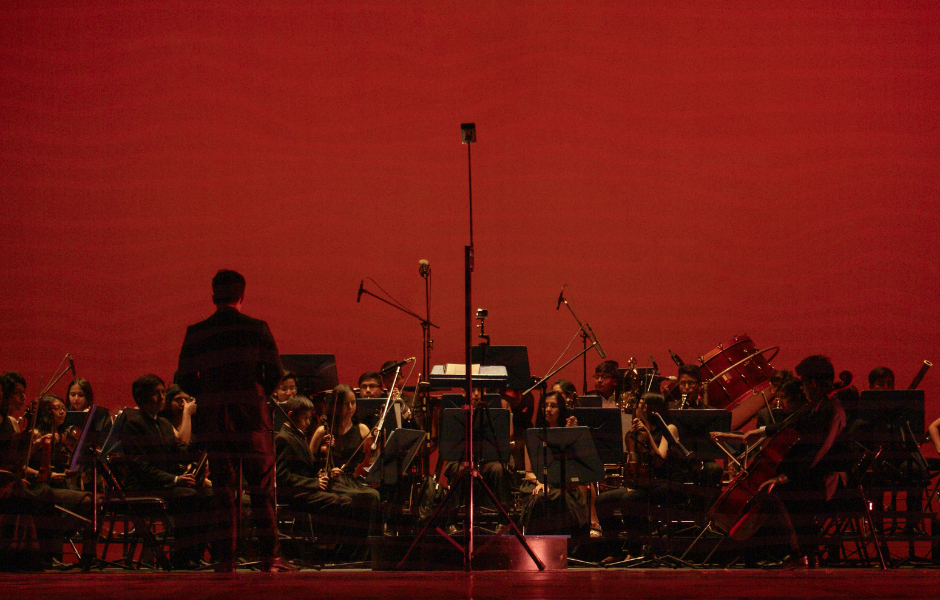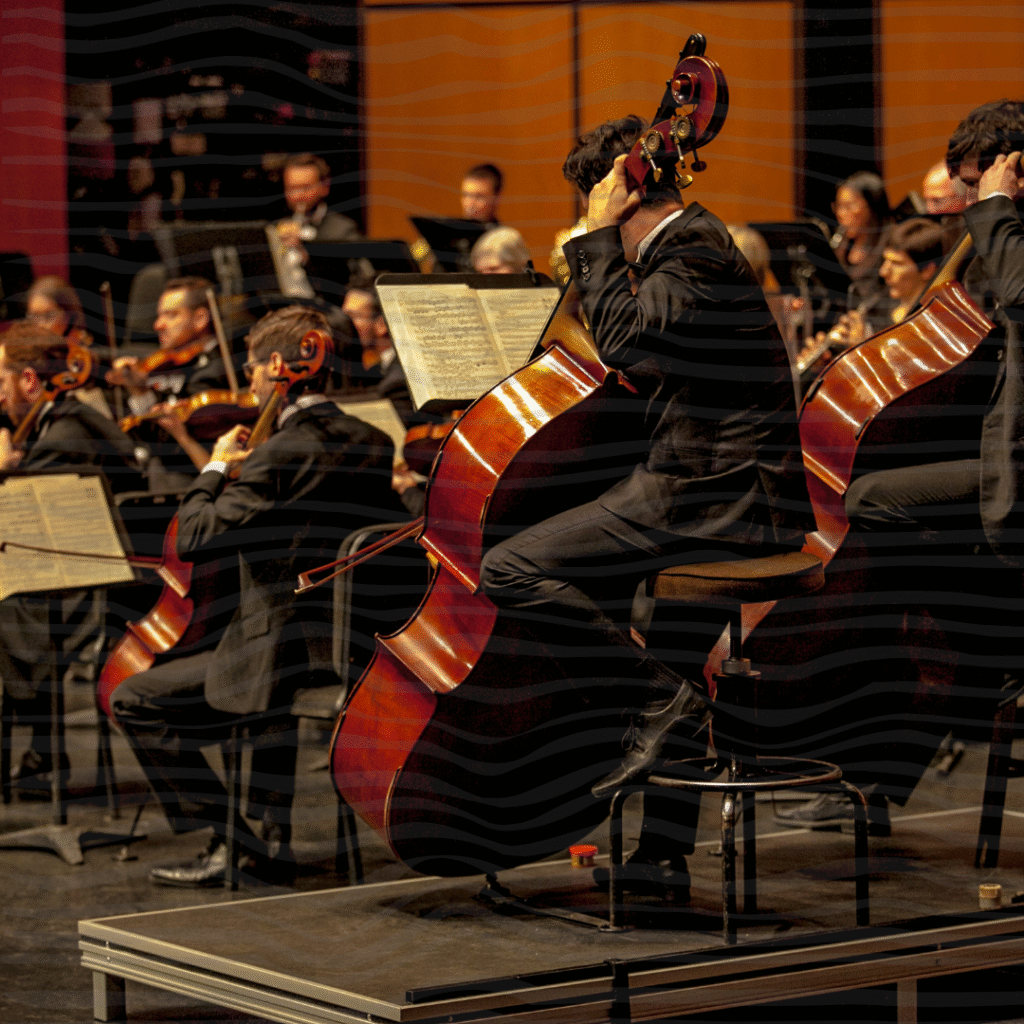
This children’s article, What is an orchestra: a kids’ guide to classical music’s biggest band, has been written for native English speakers and learners of English as a second or foreign language. It can help children practise reading and comprehension, learn useful music vocabulary, and explore what makes orchestras so special. Written by Sinead O’Carroll, an experienced teacher and writer.
What is an orchestra?
An orchestra is a large group of musicians who play different instruments together. They work as a team to perform music, from classical symphonies to film scores and even pop concerts. Most orchestras have four groups of instruments: strings, woodwinds, brass, and percussion.
Some orchestras are very large, with more than 100 players. These are often called symphony orchestras. Smaller ones might be called chamber orchestras.
The musicians are led by a conductor, who stands at the front of the stage. The conductor uses a baton (a small stick) to help guide the players. This helps everyone keep the same speed, rhythm, and mood.
The four families of the orchestra
Each instrument in an orchestra belongs to a family. These families are groups of instruments that are played in similar ways.
Strings
These include violins, violas, cellos, and double basses. They are played with a bow or by plucking the strings. They often carry the melody and make a warm, rich sound.
Woodwinds
This family includes flutes, clarinets, oboes, and bassoons. These instruments are played by blowing air through them. They can sound light, cheerful, or mysterious.
Brass
Trumpets, trombones, French horns, and tubas are all brass instruments. They are played by buzzing the lips into a mouthpiece. Brass instruments are powerful and bright.
Percussion
Percussion instruments include drums, cymbals, tambourines, and more. Some make rhythm, while others add special effects. They are usually struck, shaken, or tapped.
What does a conductor do?
Even though the musicians have written music in front of them, the conductor helps shape the way the piece is played. They decide:
- How fast or slow the music should go
- How loud or soft it should be
- Whether it sounds smooth, spiky, sad, or exciting
The conductor’s job is to bring the music to life and help the orchestra play as one.
The concertmaster is usually the lead violinist. They help the conductor and lead the string section.
Why do people love orchestras?
Orchestras have been around for almost 600 years. They can make you feel all sorts of emotions – joy, fear, sadness, or excitement. They can tell stories, paint pictures with sound, and take listeners on imaginary adventures. Listening to an orchestra can be a powerful and magical experience.
You can learn more about orchestras, their instruments and their history at Britannica – Orchestra

Article vocabulary list
- Orchestra – A large group of musicians who play instruments together
- Conductor – The person who leads the orchestra and shapes the performance
- Baton – A small stick the conductor uses to keep time
- Symphony orchestra – A very large orchestra with many players
- Strings – The family of instruments with strings, like violins and cellos
- Woodwinds – Instruments you blow into, like flutes and clarinets
- Brass – Instruments made of metal, like trumpets and horns
- Percussion – Instruments you hit, shake, or tap to make sounds
- Concertmaster – The lead violin player who helps the conductor
- Melody – The main tune of a piece of music
Comprehension questions
Just click the plus (+) to see the answer
1. What are the four families of instruments in an orchestra?
Answer: Strings, woodwinds, brass, and percussion
2. What is the job of the conductor?
Answer: To lead the orchestra and shape how the music is played
3. What instrument does the concertmaster usually play?
a) Trumpet
b) Violin
c) Flute
Answer: b) Violin
4. Which instrument family includes drums and cymbals?
a) Brass
b) Woodwinds
c) Percussion
Answer: c) Percussion
5. How do brass instruments make sound?
Answer: By buzzing the lips into a mouthpiece
6. What does the baton help the conductor do?
Answer: Keep time and help the players know when to play
7. What is a symphony orchestra?
Answer: A very large orchestra with many musicians
8. How long have orchestras been around?
a) About 40 years
b) Almost 600 years
c) Since the year 2000
Answer: b) Almost 600 years
Sinead is a writer and EFL teacher with eight years’ experience. She’s a native English speaker who loves making news stories fun and easy to understand for children around the world. Her passions include travel, animals, and helping to make the world a kinder, more sustainable place.




